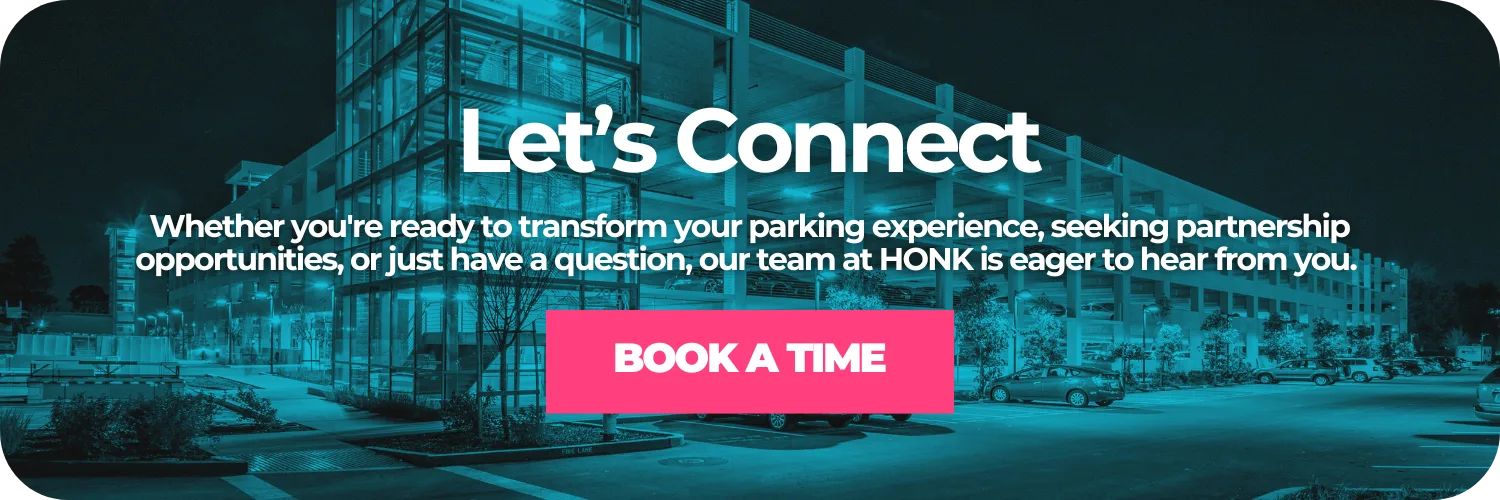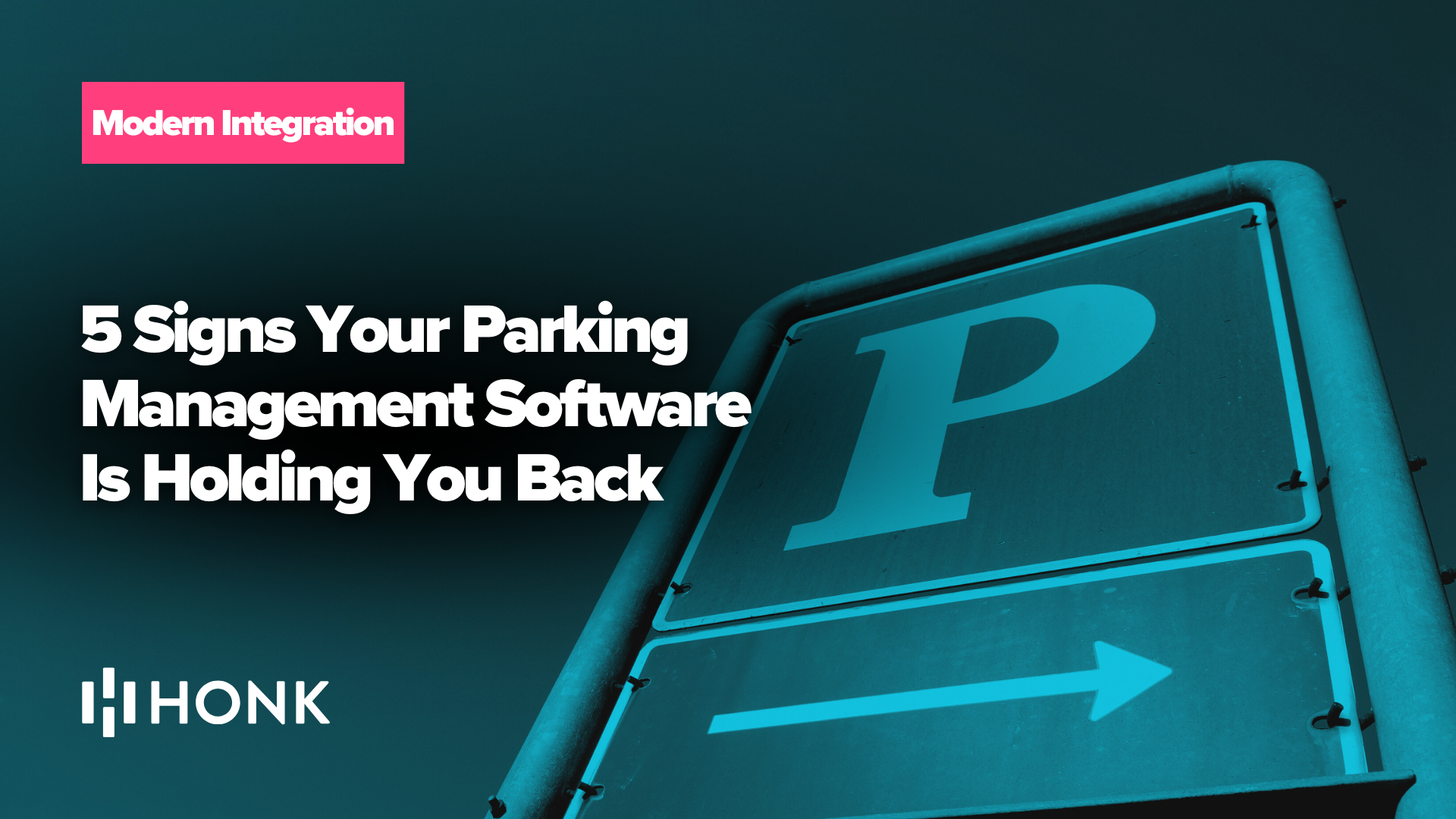For decades, parking operations have been driven by reaction. Rates were adjusted after lots filled up. Promotions were launched only when occupancy dropped. Staff were redeployed once congestion had already begun. While that approach worked for a long time, today’s mobility landscape is evolving too quickly for reactive thinking to keep up. Drivers expect seamless, digital-first experiences. Cities and campuses require smarter, more efficient curb management. Operators are under pressure to do more with less while maximizing revenue and maintaining a smooth experience.
At HONK, we believe the future of parking isn’t reactive — it’s predictive. Instead of waiting for demand to happen and responding after the fact, predictive parking allows operators to anticipate what’s coming and act in advance. This shift represents the next evolution of smart mobility, and it builds directly on the foundation many operators have already created with tools like dynamic pricing and real-time analytics.
Predictive parking is more than a technology trend — it’s a strategic shift that can transform how operators plan, price, and manage their assets. In this guide, we’ll explore what predictive parking is, how it works, how it connects to HONK’s platform, and how you can begin implementing it today.
Why reactive parking leaves revenue on the table
Traditional parking management is reactive by nature. Operators make decisions based on what has already happened — adjusting pricing after demand spikes, scheduling staff once congestion occurs, or launching promotions only when revenue dips. The problem is that by the time those decisions are made, opportunities have already been lost.
This reactive approach creates several challenges:
- Pricing changes happen too late to capture peak willingness to pay.
- Promotions miss their window to stimulate demand before occupancy drops.
- Staffing adjustments come after bottlenecks form.
- Lot utilization remains uneven because decisions lag behind behavior.
With predictive tools, operators don’t need to wait until after the fact. They can anticipate occupancy shifts and revenue opportunities days or even weeks in advance — and act before they happen.
Operators already using HONK’s dynamic pricing have seen the benefits of responding faster to changes in demand. As we explained in How Dynamic Pricing Improves Urban Parking Efficiency, moving away from static rates and reacting to real-time occupancy can improve turnover, reduce congestion, and boost revenue. Predictive analytics takes this one step further — from reacting to anticipating.
What predictive parking is and why it matters
Predictive parking is the use of data and machine learning to forecast demand, occupancy, and pricing opportunities before they occur. Instead of relying solely on historical reports or current conditions, predictive systems analyze patterns, external signals, and historical trends to create forward-looking insights. This allows operators to plan rates, staffing, marketing, and capacity allocation ahead of time.
With predictive parking, you can:
- Adjust pricing days before a surge to maximize revenue.
- Offer targeted promotions in advance of forecasted low-demand periods.
- Schedule staff proactively based on anticipated peaks.
- Open or close lots before congestion begins.
- Reduce guesswork and increase revenue predictability.
The difference between reactive and predictive is the difference between responding to the weather after it rains and preparing for it when you see the forecast. Predictive parking lets you plan for tomorrow’s demand instead of reacting to yesterday’s performance.
How predictive parking works — and how HONK fits in
Predictive parking is built on data — and lots of it. The more accurate and complete your data, the more powerful your predictions will be. The most effective models combine multiple data sources, including:
- Historical occupancy, pricing, and transaction data
- Time of day, day of week, and seasonality patterns
- Event calendars and venue schedules
- Weather forecasts
- Road closures, construction, and traffic conditions
- Transit disruptions or schedule changes
- Local business activity and holiday trends
HONK is uniquely positioned to make predictive parking possible because our platform already collects many of these data points as part of normal operations. Every transaction, every pricing adjustment, and every occupancy reading becomes part of a larger dataset that powers predictive insights. Our analytics tools, as explored in Parking Analytics: Turning Data into Actionable Operational Insights, already give operators the visibility they need to understand what’s happening. Predictive tools build on that foundation to show what will happen next.
This shift moves operators along the data maturity curve:
- Descriptive analytics: What happened?
- Diagnostic analytics: Why did it happen?
- Predictive analytics: What will happen?
- Prescriptive analytics: What should we do about it?
Most operators today use descriptive analytics to look backward. A growing number are starting to diagnose why those patterns occur. Predictive analytics is the next step — and prescriptive actions, like automatically adjusting prices or launching promotions, naturally follow.
HONK’s platform is designed to help operators progress through these stages, turning raw data into strategy and action.
Predictive parking in action
To understand predictive parking’s impact, let’s look at how it works in real-world scenarios.
Dynamic pricing, evolved
Dynamic pricing adjusts rates in response to real-time demand. Predictive pricing uses forecasted demand to set rates in advance.
Imagine a lot near a concert venue. Historical data and event calendars show that occupancy consistently surges 90 minutes before showtime. With predictive pricing, HONK can help you raise rates earlier in the day, capturing more revenue from advance reservations. Conversely, if a lull is predicted due to a holiday weekend, you can launch promotions ahead of time to stimulate demand and avoid underutilization.
This approach builds on the strategies outlined in From Static Rates to Dynamic Pricing: How HONK’s Control Center Empowers Parking Operators, adding a layer of foresight to dynamic operations.
Smarter promotions and marketing
Predictive insights make marketing more strategic. If forecasts show a dip in weekday occupancy due to a holiday, you can launch targeted campaigns days in advance — not after the lots are already empty. That might mean offering discounts for early bookings, bundling parking with nearby events, or sending push notifications to frequent customers.
The result is a marketing plan that shapes demand instead of chasing it.
Staffing and resource allocation
Staffing is another area where predictive analytics delivers value. If HONK’s models show occupancy will peak at 5:30 PM on Friday, you can adjust schedules accordingly. You might open extra entry lanes, increase on-site support, or schedule enforcement shifts to align with expected usage.
This proactive approach improves efficiency, reduces costs, and creates a better customer experience.
Multi-lot portfolio optimization
Operators with multiple facilities can use predictive parking to forecast how demand will be distributed across assets. With that information, you can adjust pricing between lots to balance utilization, direct drivers to underused facilities, or reconfigure signage and messaging to prevent overflow.
Examples like Solving Parking Challenges at Sports Complexes with HONK’s Flexible Solutions show how predictive thinking scales across complex operations.
Overcoming challenges
While predictive parking offers significant benefits, it also comes with challenges. The good news is that none of them are insurmountable — especially when you’re building on a platform like HONK.
- Data quality: Predictive models rely on accurate, comprehensive data. HONK helps operators centralize and standardize data collection so forecasts are built on solid ground.
- Complexity: Machine learning can seem daunting, but HONK’s platform is designed to make predictive capabilities accessible and actionable without requiring a data science team.
- Transparency: Operators need to trust predictive recommendations. HONK’s tools provide clear, explainable insights and keep you in control of final decisions.
- Unexpected events: No model is perfect. That’s why HONK integrates predictive forecasts with real-time data, allowing you to adapt quickly when conditions change.
The road ahead: predictive parking and smart mobility
Predictive parking is more than a feature — it’s the foundation for a smarter, more connected mobility ecosystem.
In the future, predictive models will integrate with city traffic systems, public transit networks, and autonomous vehicle routing. Parking availability and pricing will be shared with navigation apps in real time, reducing congestion and emissions. City planners will use predictive parking data to inform infrastructure decisions. Autonomous fleets will reserve spaces based on anticipated occupancy.
This future isn’t far off. It’s already starting to take shape in projects like Autonomous Vehicles + Smart Parking: How We’re Building the Next Era with HONK, and predictive analytics is the key to unlocking it.
Building the predictive future with HONK
HONK has always focused on helping operators do more with their parking assets. From frictionless digital payments to dynamic pricing tools, our platform has evolved to meet the changing needs of modern mobility.
Predictive parking is the next step in that evolution. We’re building tools that allow operators to forecast demand, optimize pricing, plan staffing, and make proactive decisions — all within the same intuitive platform they already use. And because HONK is built to be scalable and flexible, predictive capabilities can be introduced gradually, starting with forecasts and evolving into automated, prescriptive actions over time.
Parking is no longer just about managing spaces. It’s about managing data, demand, and opportunity. Predictive analytics is how you turn that opportunity into growth.
A practical roadmap for implementation
If you’re ready to embrace predictive parking, here’s a simple step-by-step path to get started:
- Baseline your data: Ensure occupancy, transaction, and pricing data are accurate and centralized.
- Start with one pilot: Choose a facility or district where demand is predictable (like near an event venue) and run forecasts for a few weeks.
- Compare forecast to reality: Use those results to refine your models and build confidence.
- Integrate prescriptive actions: Use forecasts to inform pricing, staffing, and promotions.
- Scale gradually: Expand predictive capabilities across your portfolio as confidence grows.
HONK is building features to support every step of this journey, so predictive parking doesn’t require reinventing your operation — just enhancing it.
Measuring success
To understand the impact of predictive parking, focus on measurable outcomes like:
- Revenue per space per hour
- Occupancy distribution across facilities and time
- Availability at peak times
- Promotion performance
- Staffing efficiency
- Throughput and dwell times
As explained in Data-Driven Parking: Leveraging Parking Management Software for Revenue Optimization, these metrics help operators understand not just what’s happening, but how predictive insights improve performance over time.
Don’t just react — predict
The parking industry is evolving quickly. Drivers want seamless, digital-first experiences. Cities and campuses need smarter curb management. Operators must increase revenue while reducing costs and improving service. The days of reacting to yesterday’s data are over.
Predictive parking gives you the power to anticipate tomorrow. It helps you set the right price at the right time, deploy resources where they’re needed most, and plan operations with confidence. It transforms static assets into intelligent infrastructure — and it turns parking from a cost center into a strategic advantage.
At HONK, we’re building the tools that make that possible. Whether you’re managing a single facility or an entire city, predictive parking is within reach — and HONK is here to help you get there.
If you’re ready to move from reactive to predictive, get in touch with us today to learn how HONK can help you forecast demand, optimize revenue, and future-proof your parking operations.





